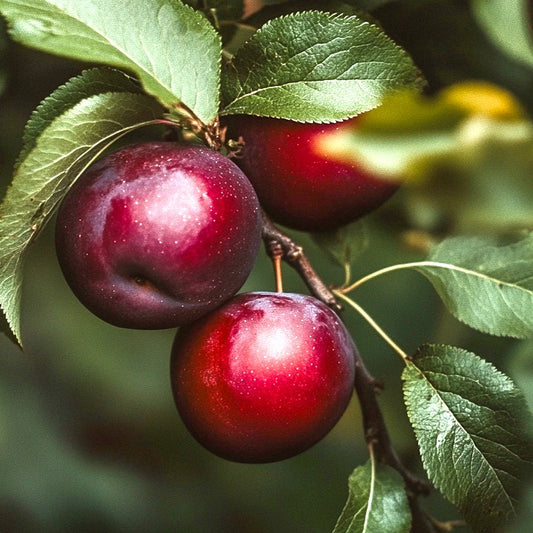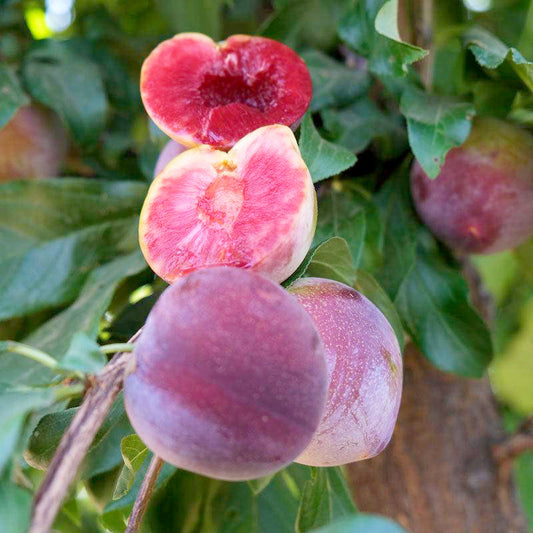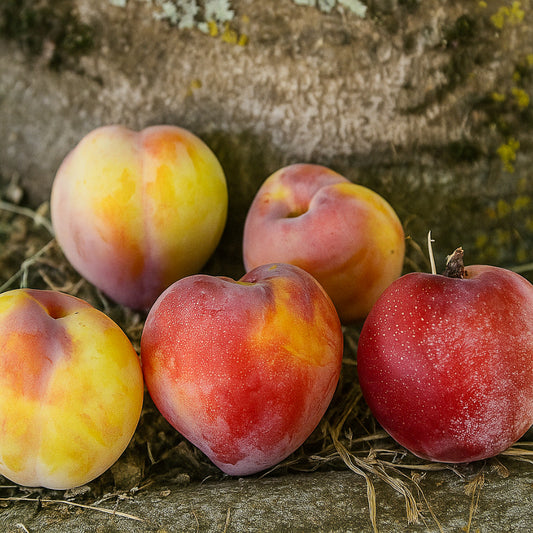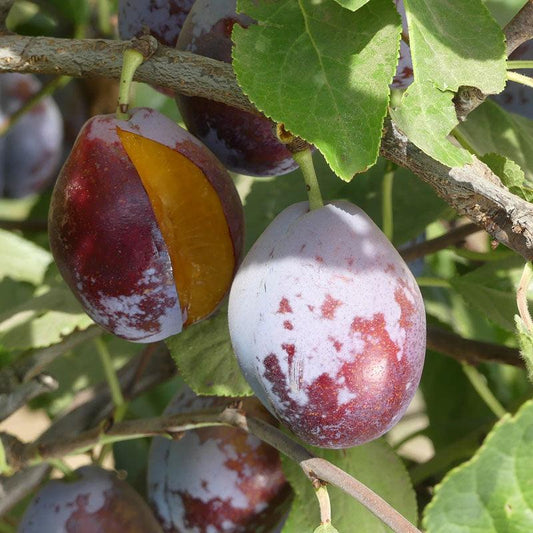Grow and Propagate Plum Tree: Techniques for Grafting Plum Trees
Growing your own plum trees is one of the most rewarding experiences in the garden. Whether you’re interested in plum tree propagation from seed, experimenting with plum tree cuttings, or mastering the art of grafting plum trees, there are several reliable ways to propagate plum tree varieties successfully. With the right techniques—and a little patience—you can grow vigorous plum trees that produce beautiful blossoms and delicious fruit for years to come.
This guide breaks down the key methods for how to propagate a plum tree, how to graft, how to grow plum trees from seed or cuttings, and how to choose the right rootstock and scion wood. You’ll also find helpful links to expert tutorials, organic supplies, and variety guides that support every step of your plum-growing journey.

Understanding Plum Trees and Why Propagation Matters
Plums belong to the plum prunus group of stone fruit, which includes both Japanese plum and European plum varieties. Propagation allows you to grow new trees that match the traits of a parent tree, create hardy new rootstock, or experiment with different plum varieties.
Whether you’re a beginner or an experienced gardener, learning how to grow plum trees through propagation opens up endless possibilities for your orchard or backyard.
How to Propagate Plum Tree from Seed
Growing a fruit tree from seed is economical and exciting, especially when you want to explore natural variation or develop your own rootstock for future grafts.
While seed-grown plums rarely produce fruit identical to the parent tree, they often grow vigorous, adaptable trees that thrive in your local climate.
Stratifying Plum Seeds
Plum seeds need a cold period to sprout, a process called stratification.
- Collect the pits from fully ripe, healthy plums.
- Clean the seeds thoroughly to remove pulp (this prevents mold).
- Refrigerate the seeds in moist peat moss or sand for 10–12 weeks at 32–41°F.
After stratification, plant the seed about 2 inches deep in loose, well-draining soil. Keep the soil moist and warm; germination may take weeks or even months.
Transplanting Seedlings
Once seedlings develop strong roots and a few sets of leaves, move them outdoors to a sunny location. A helpful step-by-step planting guide is available in the Planting and Growing Plum Trees article.

Grafting Plum Trees: The Most Reliable Propagation Method
If your goal is producing fruit identical to your favorite plum tree variety, grafting is the best option. Grafting a plum tree allows you to combine strong rootstock with high-quality scion wood to create a predictable, vigorous tree.
Choosing Rootstock for Grafting
Rootstock determines the final tree’s size, disease resistance, and soil tolerance. Common rootstocks include:
- Myrobalan (Prunus cerasifera): Very vigorous, adaptable to many soils.
- St. Julien A: A dwarfing rootstock ideal for smaller spaces.
- Marianna 2624: Great for wet soils and resistant to root diseases.
Rootstock and grafting tools can be found in the grafting supplies collection and the plum trees collection.

How to Graft a Plum Tree (Beginner-Friendly)
There are several ways to graft trees, but these are the most common for plums:
1. Whip and Tongue Graft
- Best for young rootstock and thin scion wood
- Creates a strong graft union
- Performed in early spring when both parts are still dormant
This method gives one of the highest chances of a successful graft.
2. Cleft Graft
- Ideal for thick rootstock or multi-scion grafting
- Insert one or two scions into a split in the rootstock
- Also done in late winter to early spring
3. Bud Grafting (Budding)
- Popular in summer when bark “slips” easily
- Uses a single bud instead of an entire scion
- Efficient for mass propagation of a tree variety
To keep moisture in the graft, many gardeners cover the graft area with plastic bags until healing begins.
For deeper study, explore plum tree varieties and choosing the right graft partner.

Propagating Plum Tree from Cuttings
If you're wondering how to propagate plum trees without grafting, cuttings are a practical option. Plum tree cutting propagation uses pieces of branches to clone an existing tree.
How to Root Plum Tree Cuttings
Both hardwood (winter) and softwood (early summer) cuttings can root successfully.
- Select healthy branches free of pests or disease.
- Make cuttings 6–12 inches long.
- Remove lower leaves.
- Dip the cut end in rooting hormone (organic alternatives like willow water also work).
- Plant the cuttings in a sandy, well-draining mix.
- Maintain high humidity—plastic bags or propagators help roots form faster.
Once roots develop, transplant into pots or directly into the garden. Learn how to manage pests and keep young trees healthy in the Pest & Disease Management Guide.
Organic and Sustainable Practices for Healthy Plum Trees
Using compost, organic soil amendments, and mulch builds long-term soil health and helps plums grow strong. When pruning or grafting, reuse leftover branches as mulch or add them to the compost pile.
For ongoing tree care and troubleshooting, these guides are excellent resources:
If you want to take your harvest even further, try making jam using the Organic Plum Jam Video Tutorial or explore hybrid pluots in The World of Pluots Guide.
Conclusion
Whether you prefer growing from seed, experimenting with plum tree cuttings, or learning how to graft a plum tree with precision, plum tree propagation is a rewarding project.
By choosing the right rootstock, timing your grafts in early spring, and nurturing your cuttings and seedlings with organic care, you’ll enjoy vigorous trees and bountiful harvests for years.
Explore certified organic plum trees and tools anytime in the Grow Organic Plum Tree Collection.









